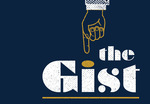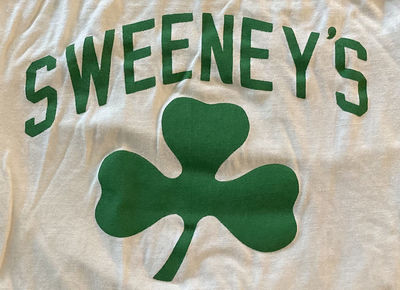
I spent about a year tending bar part-time at Sweeney’s after I graduated from Notre Dame in 1975. In fact, I believe I was the last bartender hired before it closed in 1976.
By then Sweeney’s was most definitely not a student bar. I do not recall ever seeing a student in the place except on football weekends or St. Patrick’s Day, the only exception being two good friends who frequently joined me there on some of the nights I was working. Downtown South Bend was a ghost town in many respects by the mid-1970s. Few reasons existed to draw students to the area, and none to Sweeney’s.
The bar was owned by Mary Sweeney, whose husband tended bar in the daytime. Either I or the other part-time bartender worked from 5 p.m. until closing. The building and the bar had seen better days. I recall being unwilling to explore the multiple back rooms. They were in complete disrepair and no doubt harbored ghosts or, worse still, skeletons from the bar’s past.
It resembled a typical old-school dark New York City watering hole, a very long bar with maybe 20 to 25 seats and a single row of tables. Minimal natural light made it inside. A big picture of Knute Rockne hung behind the bar. When I arrived at 5 p.m., I would find three or four regulars seated at the bar, finishing their daily routines of drinking and then drinking some more. All these gents seemed long in the tooth, certainly in their 70s and pretty forlorn in both their manner and their conversation.
I once asked Chuck, Mary’s husband, how old they were and was surprised to learn they were all around 50 years old. All had had good jobs at Studebaker and all had failed to find other work in the dozen years since the South Bend plant had closed. (As an addendum to this discovery, I enrolled in a graduate program at the University of Iowa in the fall of 1976 and went to work tending bar part-time at George’s Buffet. There, still working 80-plus-year-old farmers and tin-roofers came in midday for a quick beer. I absorbed my first real economics lesson in the toll unemployment had taken on those much younger South Benders compared to the fit, active and energetic employed “elderly” Iowans I encountered.)

Once those few regulars departed Sweeney’s around 6 p.m., I would sit alone in the bar until a handful of very dedicated patrons showed up around 8: A fellow named Fitz, late 40s, a townie and nice guy who may or may not have had some affiliation with Notre Dame; a woman who was finishing a Ph.D. and her husband; and one fellow who worked in the computer sciences division as a data analyst. They were joined nightly by professor Lew Nicholson, a medievalist in the English department, who always wore a suit and tie and occasionally drove his 1950s restored Morgan convertible to the bar. The conversation was always lively and engaging. I probably comped half their collective drinks as I very much wanted them to be there every night, otherwise my evenings would have been interminable.
Several South Bend Symphony players came in periodically after a performance and livened the place up a little. Only one other person came in occasionally, the owner of a small bar-restaurant on the other side of town.
There was a small package liquor store attached to the bar, which I also had to service. I can tell you that, more than once, when some rough looking dudes came in to buy booze between, say, 6 and 8 p.m., and they’d look in the bar and see no patrons, I wondered when I would be robbed or knocked over the head. Thankfully, I survived all of those encounters unscathed.
Sweeney’s made whatever money it did on home football weekends and St. Patrick’s Day. On those seven or eight occasions the joint was hopping. We’d hire a couple of extra waiters and work all day Friday and Saturday and rake in decent tips. We wore inexpensive green vests and quite often a boozed customer would offer me 50 or 100 bucks for the silly vest and for the life of me I don’t know why I didn’t pocket their cash.
There was also the infamous Sweeney’s white sweatshirt with the big green shamrock that was hugely popular. I still have two of them. There was an urban legend of sorts that said one batch of the sweatshirts had been produced without the apostrophe in Sweeneys. Those, it was said, were worth a small fortune.
St. Patrick’s Day was always great fun. Loads of people, even out-of-town alumni showed up and stayed most of the day. Everyone was always in a festive mood, beer flowed all day long and there was an energy to the crowd that was fun to witness. The phone would ring and some radio station somewhere in the country ask for a rendition of “When Irish Eyes Are Smiling,” which the patrons would willingly oblige.
Football Saturdays could be anticlimactic on those rare occasions when the Irish dropped a home game or, more often, because the customers had partied too much and were running out of gas.
By 1976, Sweeney’s had run its course and hadn’t really been part of Notre Dame student diversions for many years, but it still had a certain seedy charm, for me at least. The tobacco and beer stained bar remains firmly etched in my memory.
John McCarthy retired in 2016 with his wife to Chapel Hill, North Carolina after spending three-plus decades in New York City as a currency trader and manager of trading activities for various international banks. He also wrote for a short time at the Wall Street Journal and later served as executive director of a private school serving children with severe physical and cognitive disabilities.